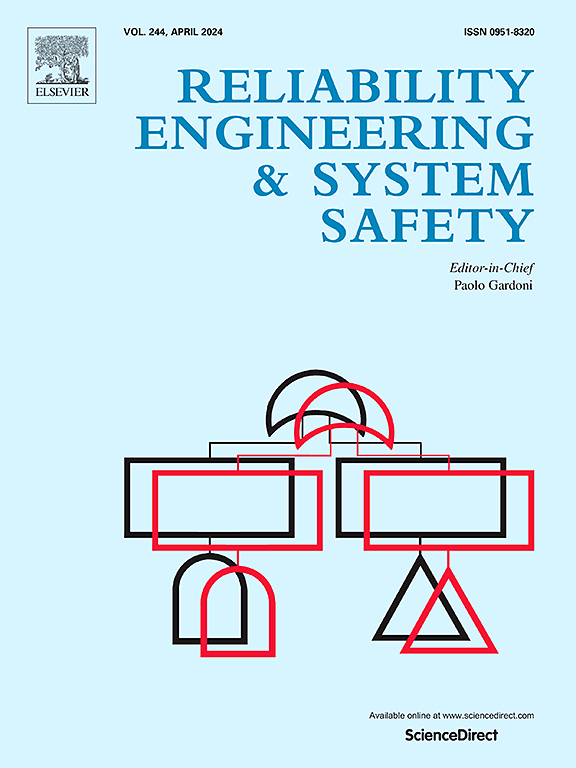Two-stage stochastic optimization for emergency management of metro systems under uncertain storm floods
IF 11
1区 工程技术
Q1 ENGINEERING, INDUSTRIAL
引用次数: 0
Abstract
Climate change and urbanization have increasingly exacerbated the threat of storm floods to urban metro systems. To enhance the flood emergency management of metro systems, this study proposes a two-stage stochastic optimization model. In this model, the closure decisions for risky stations and the allocation of flood control resources are implemented before and during the rainstorm, respectively, to maximize the average utility of passengers in the metro network. A case study on the Shanghai metro system is conducted to demonstrate the applicability and effectiveness of the proposed model. The results indicate that the two-stage stochastic optimization model can generate refined closure schemes and dynamically adaptive protection schemes for risky metro stations. Compared to one-stage strategies that do not consider the uncertainty of rainstorms, the two-stage model achieves higher passenger utility. Furthermore, the mechanisms behind the closure decisions made by the two-stage model are interpreted using an explainable artificial intelligence (XAI) technique, SHAP (SHapley Additive explanation). It is revealed that a metro station with low passenger volume in a high-rainfall sub-catchment has a greater probability of being closed before floods. Future works can be conducted to further explore feedback mechanisms between the two optimization stages or optimize the location and inventory of resource warehouses for metro systems.
不确定暴雨洪水条件下地铁系统应急管理的两阶段随机优化
气候变化和城市化日益加剧了暴雨洪水对城市地铁系统的威胁。为了加强地铁系统的洪水应急管理,本文提出了一种两阶段随机优化模型。在该模型中,分别在暴雨前和暴雨中实施风险站点的关闭决策和防洪资源的分配,以最大化地铁网络中乘客的平均效用。以上海地铁系统为例,验证了该模型的适用性和有效性。结果表明,该两阶段随机优化模型可为危险地铁站点生成精细化的合闸方案和动态自适应的防护方案。与不考虑暴雨不确定性的单阶段策略相比,两阶段模型获得了更高的乘客效用。此外,两阶段模型做出的关闭决策背后的机制使用可解释的人工智能(XAI)技术SHAP (SHapley Additive explanation)进行解释。结果表明,在高降雨量的子集水区,客流量小的地铁站在洪水发生前关闭的可能性更大。未来的工作可以进一步探索两个优化阶段之间的反馈机制,或者优化地铁系统资源仓库的位置和库存。
本文章由计算机程序翻译,如有差异,请以英文原文为准。
求助全文
约1分钟内获得全文
求助全文
来源期刊

Reliability Engineering & System Safety
管理科学-工程:工业
CiteScore
15.20
自引率
39.50%
发文量
621
审稿时长
67 days
期刊介绍:
Elsevier publishes Reliability Engineering & System Safety in association with the European Safety and Reliability Association and the Safety Engineering and Risk Analysis Division. The international journal is devoted to developing and applying methods to enhance the safety and reliability of complex technological systems, like nuclear power plants, chemical plants, hazardous waste facilities, space systems, offshore and maritime systems, transportation systems, constructed infrastructure, and manufacturing plants. The journal normally publishes only articles that involve the analysis of substantive problems related to the reliability of complex systems or present techniques and/or theoretical results that have a discernable relationship to the solution of such problems. An important aim is to balance academic material and practical applications.
 求助内容:
求助内容: 应助结果提醒方式:
应助结果提醒方式:


